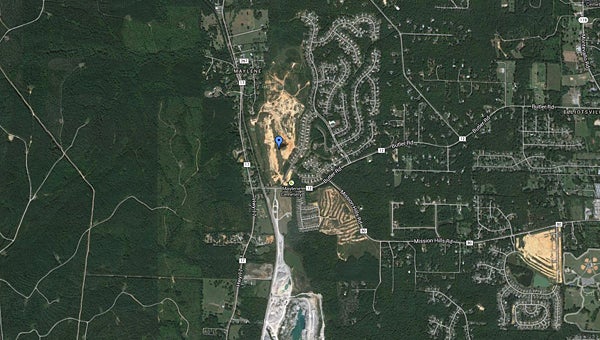Jury rules in favor of developer, against city of Alabaster
Published 11:37 am Monday, December 4, 2017

- A U.S. District Court jury on Dec. 1 ruled in favor of the South Grande View development company, saying the city of Alabaster cost the company millions in lost profits when it rezoned property off Butler Road in 2011. (File)
By NEAL WAGNER / Managing Editor
BIRMINGHAM – A jury in U.S. District Court has ruled the city of Alabaster cost the South Grande View development company millions in lost profits when it rezoned land off of Butler Road in 2011, and a judge is set to order the city to repay the amount. Alabaster Mayor Marty Handlon said the city plans to appeal the ruling.
The jury ruled in favor of the development company on Dec. 1 after a four-day trial at the Hugo Black Courthouse in Birmingham.
In the lawsuit, which was filed in 2012, South Grande View claimed the Alabaster City Council cost the company “potentially millions of dollars in lost profits” when it adopted a new zoning ordinance during its Dec. 5, 2011 meeting.
According to a complaint filed in court by South Grande View Development, the company “invested millions of dollars developing” property off Butler Road, including the Grande View Estates subdivision.
According to Alabaster City Council minutes, the council voted unanimously during its Dec. 5, 2011, meeting to rezone the undeveloped 130 acres from R-7 town home and R-4 garden home districts to R-2 single-family residential district.
In its complaint, South Grande View Development claimed the R-2 zoning allowed less dense development than the company had planned for on the property, and claimed several undeveloped lots on the property were under contract with a builder when the city voted to rezone the property.
After the rezoning, the company claimed banks holding mortgages on the company’s properties “declared themselves to be insecure and proceeded with foreclosure” on multiple pieces of the company’s properties.
The company claimed it did not learn of the city’s decision to rezone the 130 acres until “after the time for appeal to the Circuit Court for Shelby County had expired.”
In its ruling, the jury determined South Grande View proved “that the city of Alabaster’s December 5, 2011, rezoning constituted a regulatory taking of SGV’s property in sector 16 of the Grande View Estates development.”
The jury ruled the property had a market value of about $3.5 million before the rezoning, and ruled the property had a market value of $500,000 after the rezoning.
South Grande View’s attorney Jim Pino said the final ruling against Alabaster could be between $4 million and $4.5 million after the court holds a conference to assess interest during the six years the lawsuit has been pending and determine if court costs will be billed to the city.
“We gave the city of Alabaster every opportunity to settle the case and put the zoning back where it was before. We had no choice but to take it to trial,” Pino said during a Dec. 4 interview. “The jury agreed with us that what the city did was wrong. This is a clear victory for property rights in Alabama.
“The main thing is that the city (rezoned the property) without any consideration of the economic impact it would have on my client,” Pino added. “Once you start spending money and making improvements to the land, the government has no right to change course midstream and alter the zoning. It wasn’t done for any public benefit, it was done to prevent our client or any other developer from developing it other than the manner in which the city wanted.”
Alabaster Mayor Marty Handlon said the city is planning to appeal the case to the U.S. Court of Appeals.
“We feel a lot more hopeful about the appeal. We hope the appellate court will consider all the evidence, not just a snapshot,” Handlon said during a Dec. 4 interview. “In my mind, damages are when you can’t recover from something, but zoning is not permanent. (South Grande View) could have submitted a plat that was in accordance with our subdivision regulations and requested a rezoning, but they didn’t want to do that. They haven’t really made an effort to comply with our subdivision regulations and apply for a legitimate rezoning.
“It’s disappointing to me any time government is sued, because I think it’s a bad use of taxpayer dollars,” Handlon added.









